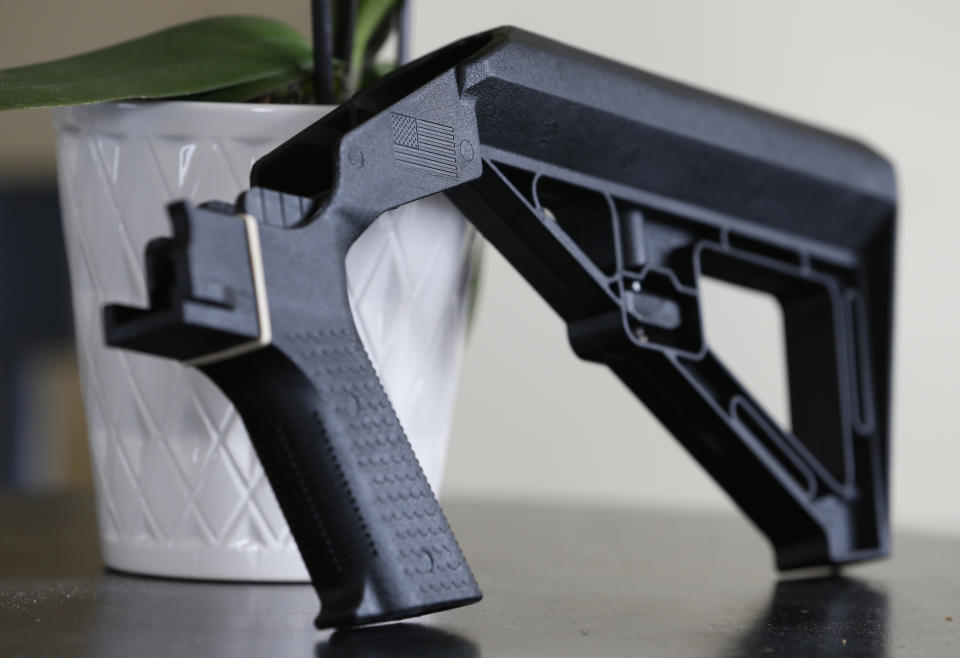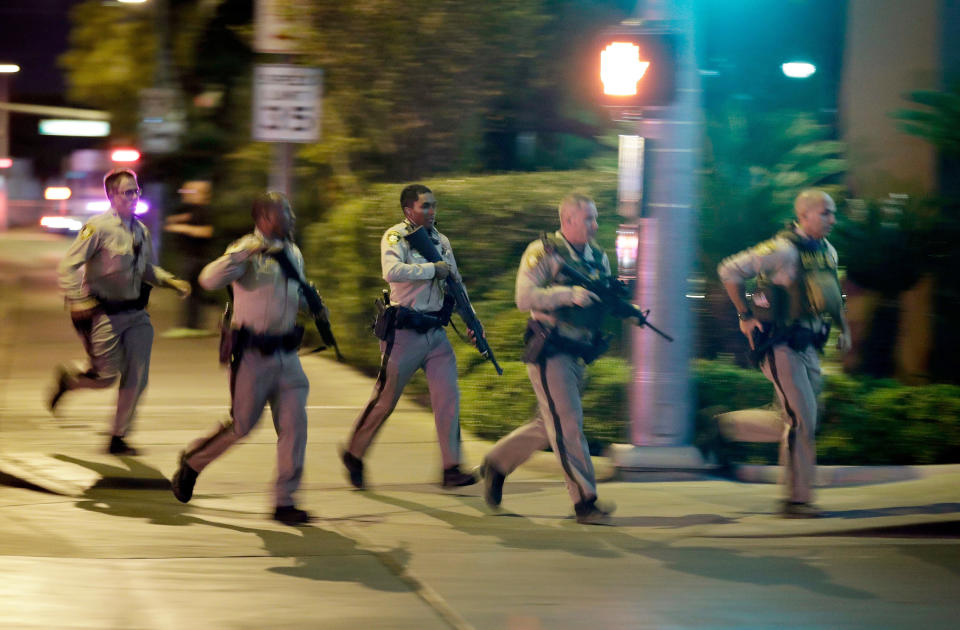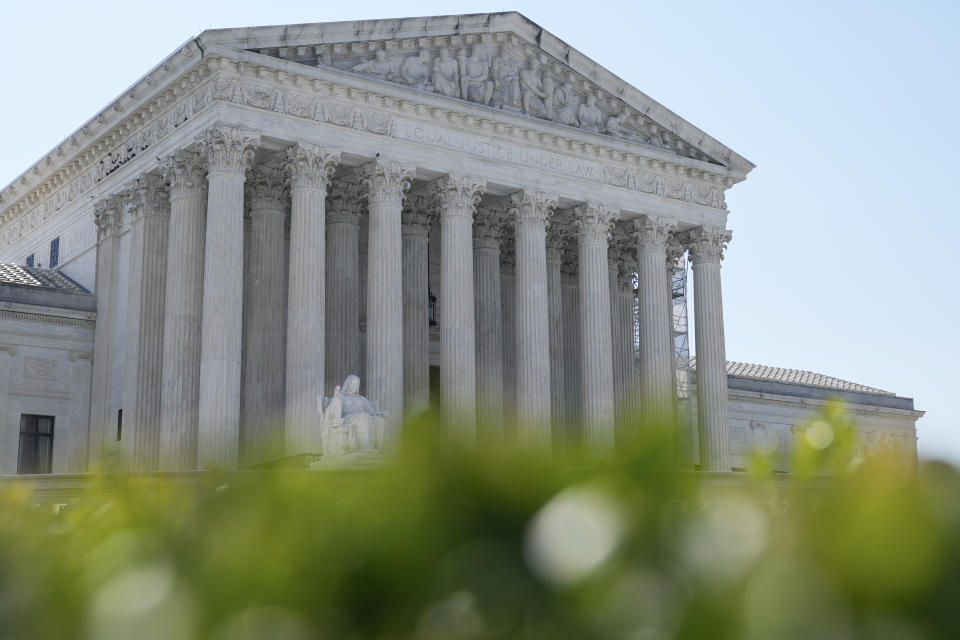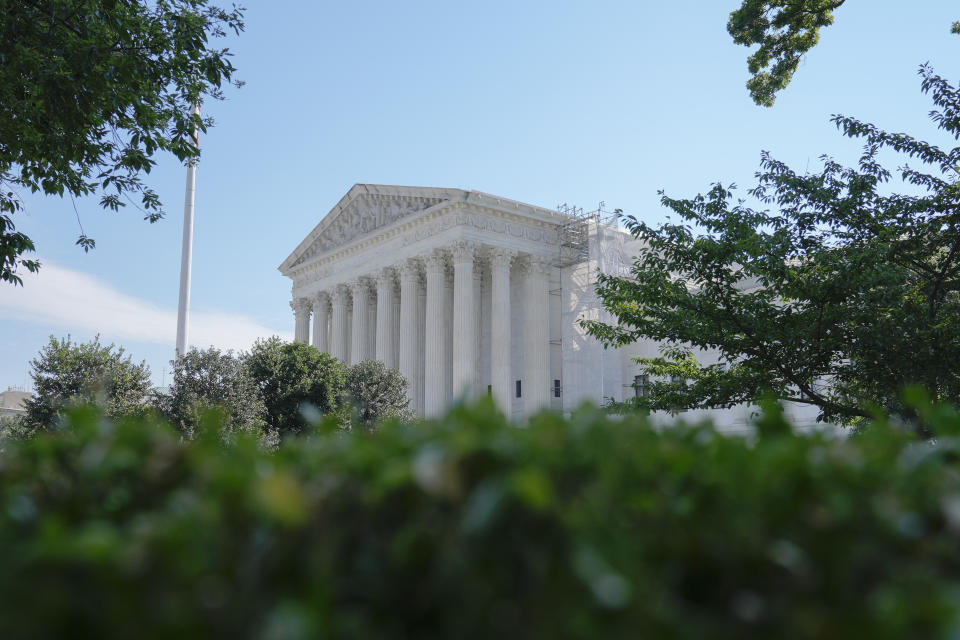What to know about bump stocks and the Supreme Court ruling striking down a ban on the gun accessory
WASHINGTON (AP) — The U.S. Supreme Court has struck down a ban on bump stocks, the gun accessory used in the deadliest shooting in modern American history — a Las Vegas massacre that killed 60 people and injured hundreds more.
The court's conservative majority said Friday that then-President Donald Trump's administration overstepped its authority with the 2019 ban on the firearm attachment, which allows semiautomatic weapons to fire like machine guns.
Here's what to know about the case:
What are bump stocks?
Bump stocks are accessories that replace a rifle's stock, the part that gets pressed against the shooter's shoulder. When a person fires a semiautomatic weapon fitted with a bump stock, it uses the gun's recoil energy to rapidly and repeatedly bump the trigger against the shooter's finger.
That allows the weapon to fire dozens of bullets in a matter of seconds.
Bump stocks were invented in the early 2000s after the expiration of a 1994 ban targeting assault weapons. The federal government approved the sale of bump stocks in 2010 after the Bureau of Alcohol, Tobacco, Firearms and Explosives concluded that guns equipped with the devices should not be considered illegal machine guns under federal law.
According to court documents, more than 520,000 bump stocks were in circulation by the time the government reversed course and imposed a ban that took effect in 2019.
Why were bump stocks banned?
More than 22,000 people were attending a country music festival in Las Vegas on Oct. 1, 2017, when a man opened fire on the crowd from the window of his high-rise hotel room. He fired more than 1,000 rounds in the crowd in 11 minutes, leaving 60 people dead and injuring hundreds more.
Authorities found an arsenal of 23 assault-style rifles in the shooter's hotel room, including 14 weapons fitted with bump stocks.
In the aftermath of the shooting, the ATF reconsidered whether bump stocks could be sold and owned legally. With support from Trump, a Republican, the agency in 2018 ordered a ban on the devices, arguing they turned rifles into illegal machine guns.
Bump stock owners were given until March 2019 to surrender or destroy them.
What did the justices say?
The 6-3 majority opinion written by Justice Clarence Thomas said the ATF did not have the authority to issue the regulation banning bump stocks. The justices said a bump stock is not an illegal machine gun because it doesn’t make the weapon fire more than one shot with a single pull of the trigger.
Justice Samuel Alito, who joined the majority, wrote in a separate opinion that the Las Vegas shooting strengthened the case for changing the law to outlaw bump stocks like machine guns. But that has to happen through action by Congress, not through regulation, he wrote.
The court's three liberal justices opposed the ruling. Justice Sonia Sotomayor wrote in her dissent that there's no common sense difference between a machine gun and a semiautomatic firearm with a bump stock.
“When I see a bird that walks like a duck, swims like a duck, and quacks like a duck, I call that bird a duck,” she wrote.
Do any states have their own bans?
At least 15 states and the District of Columbia have their own bans on bump stocks, though some could be affected by the high court’s ruling.
Most state laws, however, remain in place because the decision covered the ATF rule, not the constitutionality of state-level bans, according David Pucino, legal director of the gun control think tank Giffords.
Who challenged the ban?
A group called the New Civil Liberties Alliance sued to challenge the bump stock ban on behalf of Michael Cargill, a Texas gun shop owner. Cargill bought two bump stocks in 2018 and then surrendered them once the federal ban took effect, according to court documents.
The case didn't directly address the Second Amendment rights of gun owners. Instead, Cargill's attorneys argued that the ATF overstepped its authority by banning bump stocks. Mark Chenoweth, president of the New Civil Liberties Alliance, said his group wouldn't have sued if Congress had banned them by law.
How did the case end up before the Supreme Court?
The Supreme Court took up the case after lower federal courts delivered conflicting rulings on whether the ATF could ban bump stocks.
The ban survived challenges before the Cincinnati-based 6th U.S. Circuit Court of Appeals, the Denver-based 10th Circuit, and the federal circuit court in Washington.
But the 5th U.S. Circuit Court of Appeals based in New Orleans struck down the bump stock ban when it ruled in the Texas case last year. The court's majority in the 13-3 decision found that “a plain reading of the statutory language" showed that weapons fitted with bump stocks could not be regulated as machine guns.









